War in the "Jade State"
When Burma fell into colonial dependence on Britain, the British adopted the experience of the Burmese kings and began to use the mountain tribes of the northern regions to their advantage. As for the Kachins, as well as for their neighbors - the ranks, Protestant preachers rushed. As a result, a significant part of the Kachins was Christianized, albeit superficially. Many Kachins remained adherents of traditional beliefs, some remained loyal to Buddhism. During the Second World War, the British military command began to create from the Kachinov special detachments "Kaczyn commandos", which were used for reconnaissance and sabotage operations against the Japanese invaders. Since the Kachins were always famous as excellent warriors, and they had no equal in knowing the mountains and the jungle, they coped with the service of the British command perfectly. Before the proclamation of Burma’s independence, the British promised the Kachins, like some other peoples of the region, the granting of independence. However, the long-awaited sovereignty of this mountain people never received. Nevertheless, the central authorities of Burma managed to reach an agreement with the leaders of the Kachins — the latter agreed to support Rangoon in exchange for recognizing the inviolability of their feudal power in the areas inhabited by the Kacin tribes. A separate Kachin state was formed, which became part of the Burmese state.
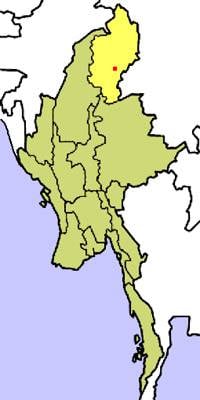
For some time, the Kachins were allies of the country's central authorities in a civil war that flared on the lands of Burma in the 1940-1950-s. On the side of the central government fought about 20 thousands of Kachinov, sent their leaders to the militia. In addition, the Kachin commando battalions were part of the regular Burmese army. However, then the Kaczyn leaders gradually turned into opposition to the central authorities of Burma. This was facilitated by the tightening of the political regime in the country, undertaken by General Ne Win, who came to power in 1962 year. The regime of Ne Win has dealt a number of serious blows to the communist rebels and to the Karen separatists. Apparently, in Rangoon, inspired by victories, they decided not to reckon with their former allies, the Kachins.
It should be noted that part of the Kaczyn nationalists turned into opposition to the central regime much earlier than Ne Vin’s accession to power. So, back in 1949, Captain Hai Seng, who served in the Kachin battalion, switched to anti-government positions and soon went underground. A young man named Dau Seng, who studied at Lashio’s public secondary school, came in contact with him. When in 1951, Mr. Hai Seng fled into Chinese territory, where he received asylum from the persecution of the Burmese authorities, Dow Seng continued to organize anti-government groups in the northern part of Shan State, where the Kachins also lived. Someone called Lamung Tu Jai, who was discharged as a corporal from the Kaczyn battalion, came out in touch with Dai Seng. In 1960, the Kachin Independence Organization was created. Dow Seng became the chief of staff in her, and Tu Jai became deputy head. After the opposition purchased weapon and ammunition, the armed wing of the Kachin Independence Organization was formed from 27 militants - the Kachin Independence Army.
5 February 1960 The Kachin Independence Organization conducted its first raid, attacking one of the banks. A group of young Kachin men led by Dow Seng and Tu Jai went into hiding and began to launch an armed struggle against the Burmese government. 5 February 1961 was officially announced the creation of the Kaczyn independence organization. Dow Seng became its commander. Ten miles east of the Kachin village of Xing Li in the northern state of Shan, a military training camp was created for the Kachin independence organization. The first rebel group began preparing for 16 March 1961. Soon, two battalions of the rebel army were formed - the first battalion in Montbarre in Bamo and the second battalion in Mont Htan. The proclamation of Buddhism as the state religion of Burma contributed to the growth in the number of Kachin resistance fighters. Since most of the Kachin people profess Christianity, such a decision of the central government could not be to their liking. More and more people, both students and peasants, joined the Kachin Independence Organization. By the 1963, the Kaczyn Independence Army already consisted of 1 brigades and 6 battalions and consisted of 1000 fighters. In the Lashо-Kutkai region, there were about 300 militants of the organization, another 380 militants were located in Bamo and Myitchin.
The Kaczyn independence organization demanded that the central government grant autonomy to ethnic groups, establish private sovereignty, not interfere in the internal affairs of the Kaczyn people, and only after these requirements were fulfilled should they conclude a treaty of friendship between Rangoon and Kachin state. In 1964, the second brigade of the Kachin Independence Army was formed.
However, in the same year 1964, the Kachins suffered a serious defeat from the Burmese government forces. As a result of the 377 fighting, Kaczyn militants died, 696 people were injured and another 2223 militant was arrested by government forces. In order to provide the organization with financial resources, Dow Seng traveled to neighboring Thailand, where he tried to enlist the support of Thai special services. By this time, the main source of financial income for the organization was drug trafficking and illegal extraction and export of jade, which were rich in the mountainous regions of Kachin.
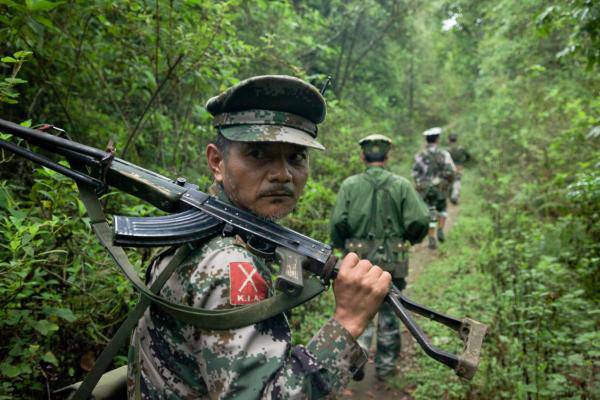
At the beginning of 1966, the Burmese government was forced to withdraw some of its troops from Kachin and transfer them to participate in hostilities against the Communist Party of Burma. Thanks to this, Kachin rebels were able to reorganize and recuperate. However, the Kachin Independence Organization faced a new problem - the national minorities living in the region, the fox, Lashi and Maru, did not agree with the tactics of the Kachin struggle for independence, primarily because their representatives were not included in the leadership of the rebel movement. Serious controversy existed among the Kaczyn rebels and with the Communist Party of Burma, which became active in the northern areas of the state of Shan. However, like the Burmese communists, the Kachins were able to enlist the support of the Chinese government. Chinese instructors engaged in the preparation of the Kaczyn rebels. Weapons were delivered from Thailand - in exchange for jade, delivered by Kachinsky smugglers. By the end of 1976, the Kachin Independence Army had already included 9 regiments of about 1750 men in Kachin State and also 500 militants in Shan State. The political concept of the Kaczyn organization of independence at that time was based on Kaczyn nationalism, although the leaders of the organization, with the aim of receiving military and financial assistance from China, declared sympathies for the communist movement. Part of the Kachins began to cooperate with the Communist Party of Burma, although most of the participants in the Kaczyn national liberation movement rather viewed the communists as opponents.
The leaders of the Kaczyn movement paid great attention to the development of external relations, trying to establish cooperation with all, as it seemed to them, interested in weakening Burma by the parties. For example, in 1970, contacts were made with the Rakhine Youth Organization, then with the Mizo and Naga rebels in neighboring India. At the same time, when the Communist Party of Burma became more active in the regions inhabited by the Kachins, the leaders of the Kaczyn Independence Army sent delegates to the command of Burmese government troops to secure their support for confronting the communists. At the same time, the Kaczyn leaders tried to enlist the support of the national minorities of the region - Mizo, Naga, Palaung. So, 2 June 1973 was signed an agreement with the Naga rebels about the latest training in the border areas of India and Burma. In Shan State, the Kachin actively collaborated with the rebel groups of the Palaung and Pa-o. The headquarters of the Kaczyn Independence Army by this time was located in Thailand.
For twenty years, the territory of Kachin has in fact been independent of the central authorities of Burma. The region’s economy was based on opium and marijuana trade and jade exports. China played a role in preserving this situation, for which it was beneficial to weaken Burma and establish its influence in the region.
In 1994, a cease-fire agreement was signed between the Burmese government forces and the Kachin Independence Army. However, the Kaczyn leaders did not intend to disarm and disband their army. They continued to recruit soldiers and train them in training camps. Despite the preservation of the cease-fire regime, new armed conflicts periodically flare up between the Kachin rebels and the central government. Thus, in 2010, the government of Myanmar demanded that the Kachin Command disarm its subordinate armed forces, since according to the Burmese constitution there is only one army in the country. However, the Chief of Staff of the Kachin Army for Independence, General Gam Shavang Gunhtang, refused to meet these demands as unacceptable to the Kachin people.
On June 9, 2011, the government forces of Burma violated the ceasefire and attacked the positions of the Kachin Independence Army. These actions of the central government led to a new escalation of the conflict in Kachin. In 2012, major clashes occurred between the government troops and the forces of the Kachin Independence Army along the Myitkyin-Bamo highway. In December 2012 and January 2013 Burmese government troops were forced to use against Kachin militants Aviation and artillery.
In June of 2014, the Kaczyn militants seized two hydroelectric power stations and took six Burmese soldiers and several Chinese workers hostage. As a result of the assault undertaken by government forces, 6 people died. 19 November 2014 Burmese government forces attacked the headquarters of the Kaczyn Independence Army in the Lisa area, which killed the insurgent 22.
The Kachin Independence Organization is trying to attract world attention to the situation in Kachin State. According to its representatives, the actions of the Burmese government forces have destructive consequences for the Kachin people. As a result of air raids and artillery shelling at least 100, thousands of civilians were forced to become refugees. Hundreds of people died. In turn, world human rights organizations accuse the Burmese command and the leaders of the Kaczyn national movement of numerous human rights violations, including the use of child soldiers. Indeed, in the mountainous Burma, the mobilization of minors for military service has long been practiced; even ten-year-old soldiers can be found. And not only the rebel detachments, but also government troops do not refuse to use young machine gunners in combat operations.
It should be noted that the rural population - the Kachins and representatives of other ethnic groups in the state - also offer armed resistance to government troops, as they are interested in maintaining their main source of income - opium poppy plantations. In Kacinia, a very large part of the population is involved in the production and trafficking of narcotics; therefore, the hard line to fight the drug business, which the Burmese government is now proclaiming, in this region inevitably faces opposition from local residents. The only possible way is to provide alternative sources of income for the Kachin peasants, but so far the central authorities do not pay serious attention to this area. The Kachins' discontent is also caused by the poorly concealed desire of the central authorities to control the extraction of jade in the region, which will also inevitably affect the well-being of the local population.
Therefore, the chairman of the Kaczyn organization of independence, General Zaung Khra, speaking at a solemn event in honor of the 56 anniversary of the Kaczyn national liberation movement, estimated the chances of establishing peace in the region very pessimistic. According to the general, the central government seeks to suppress Kachin’s resistance solely by force, having achieved disarmament and demobilization of the Kachin militias, and this cannot lead to anything good.
Apparently, the Kaczyn conflict, like other armed conflicts on the territory of Myanmar, is unlikely to ever end. Control over the jade mines and opium poppy plantations offers too much money for Kachin field commanders to find the strength to give them up. On the other hand, the Burmese government stubbornly does not want to make concessions to the national movements, not taking into account that the same Kachins are a separate people, different from the Burmese and having exactly the same right to live in their own autonomous or independent state.
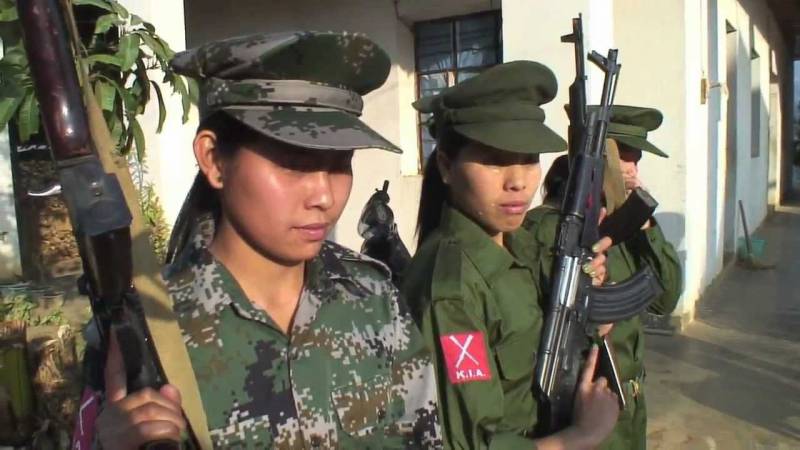
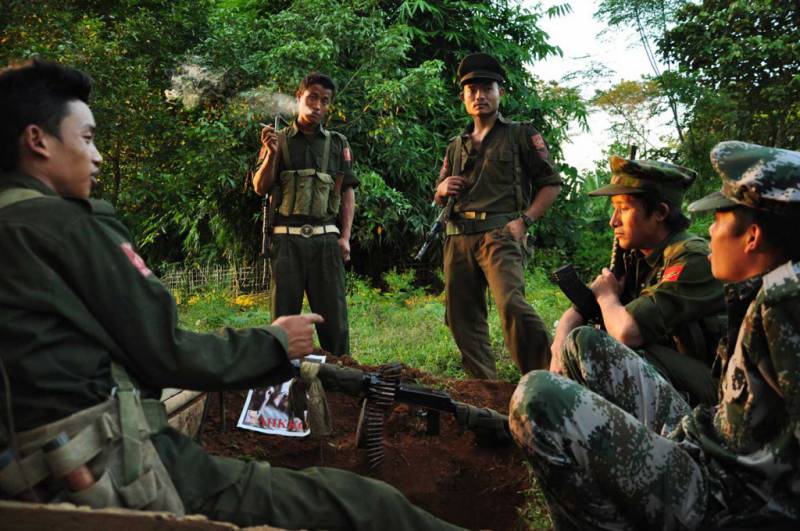
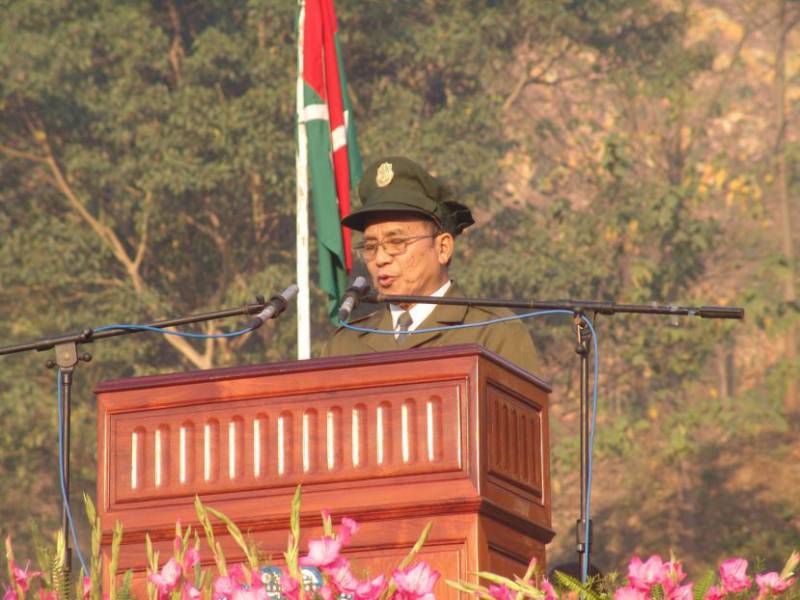
Information